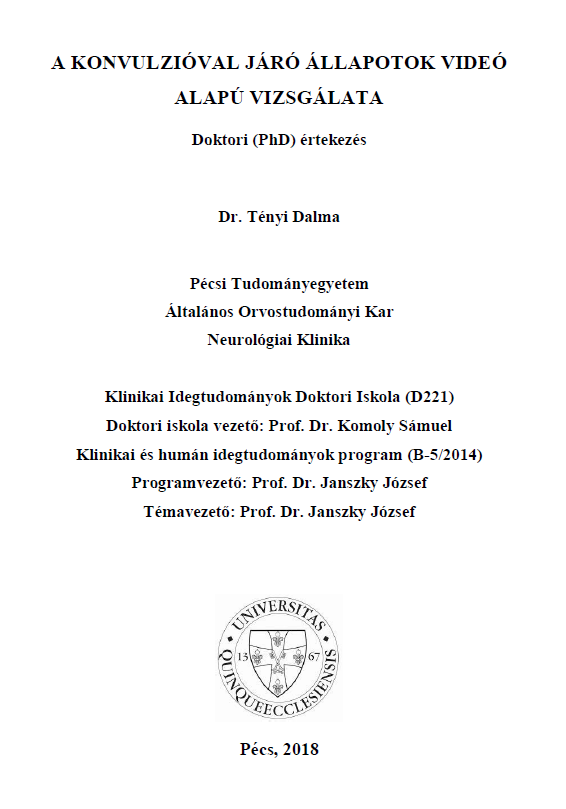A konvulzióval járó állapotok videó alapú vizsgálata
Abstract
Epileptic activity can influence the autonomic control of the cardiovascular system on 3 different levels: ictal, postictal and interictal. Interictal dysautonomia typically occurs in a long-standing, therapy-resistant epilepsy, being characterized by the disruption of the delicate balance between sympathetic and parasympathetic activity – thus increasing the risk of fatal cardiac arrhythmias. Postictal cardiorespiratory dysfunction has been correlated with sudden unexpected death in epilepsy (SUDEP), showing an incidence of 7.5/1000 patient-years. While tachycardia appears most frequently during epileptic seizures, ictal heart rate slowing is a much less common phenomenon: the prevalence of ictal bradycardia in the epileptic population is 0.24-5.5%. Ictal asystole (IA) has been reported in 0.22-0.4% of monitored patients, although the possibility of underdetection has to be considered since Rugg-Gunn et al. (2004) identified IA in 16% of patients with refractory epilepsy using implantable loop recorders. Characteristics assumed to be typical of IA are 1) focal, 2) left-sided, 3) temporal lobe seizures appearing on grounds of a 4) long-standing, 5) therapy resistant epilepsy. However, there is a growing evidence that query not only IA’s lateralizing and localizing value but also the therapy-responsive nature and the epilepsy duration: thus many aspects of IA still remain to be inconsistent. Moreover, conflicting opinions have risen regarding the overall nature of IA: some suggest its connection to SUDEP, while others argue for its benign, self-terminating nature.

